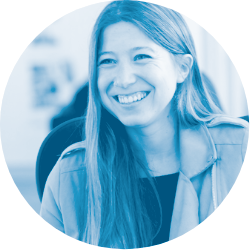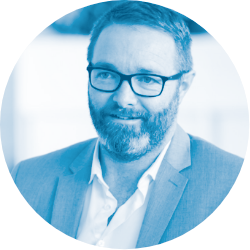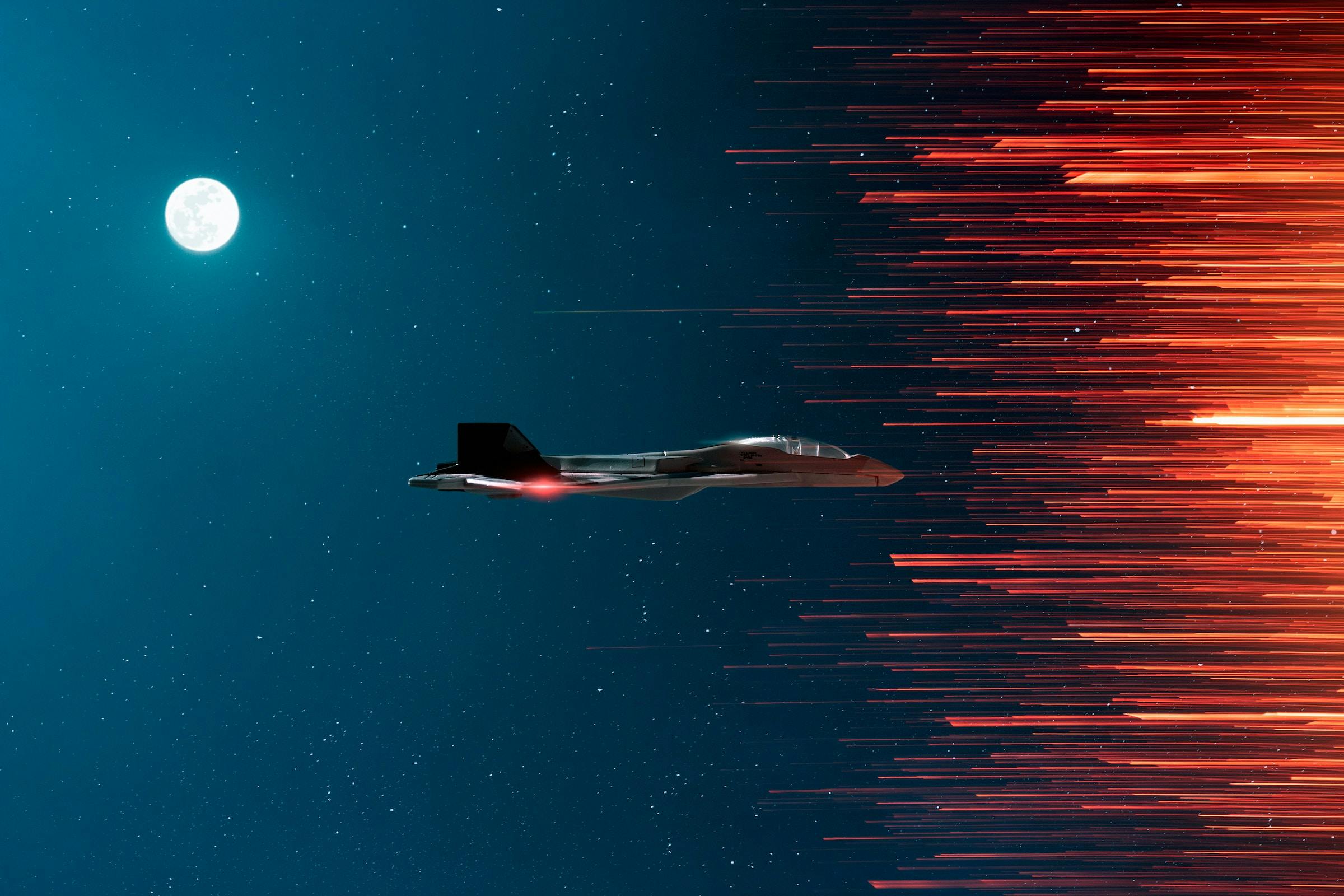
Introducting ap² x Design Fiction
Exploring the future has never been so important. In a world where the pace of change is growing and systemic complexity is increasing, being able to prepare for future transformations - whatever they may involve - is becoming vital to our survival.
The problem is: we’re really bad at predicting the future.
Humans have been fascinated with imagining the future for most of our time on earth, but we’ve long struggled with doing this accurately, especially when it comes to cultural and behavioural evolutions.
One great example of this is the 1900 World Fair ‘Uchronies’, where thinkers and artists imagined the year 2000 for the Exposition Universelle (credit to l’ Institut des Futurs Souhaitablesfor finding and sharing these gems). Early 20th century Europeans focused on imagining technological change (you can see below they imagined the vacuum cleaner and automated agricultural machinery), but were incredibly ethnocentric when it came to social norms. Projecting 100 years into the future, they clothed humans in exactly the same way, working the same jobs (maids are still commonplace) living with the same gender norms (women cleaning and men working the fields).
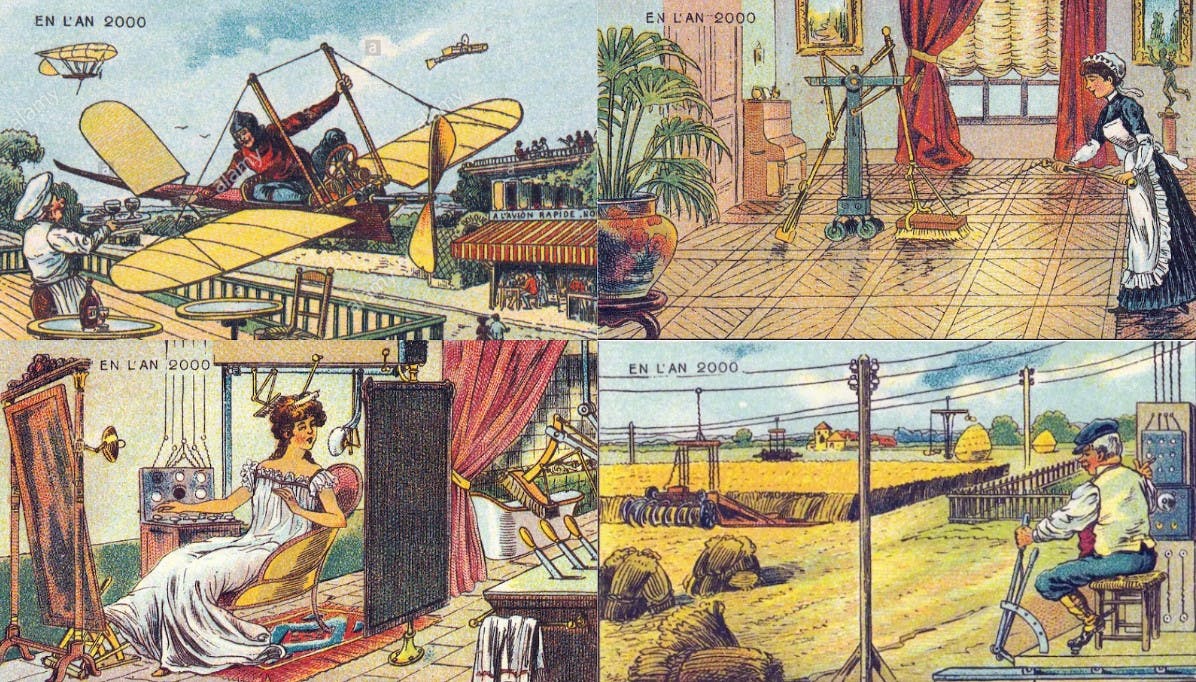
We’ve continued to do this in Science Fiction. Take the example of the flying car (Blade Runner, Back to Future, the Fifth Element…). In these stories, humans are still using cars - which have been technologically enhanced - and we are not rethinking how we might travel or move in cities of the future.
A plethora of well-documented biases hinder us from predicting the future accurately: hindsight bias (we think the past was more predictable than it was), optimism bias (we’re sure only good things will happen to us), salience bias (we focus on things that seem like a big deal while ignoring other things that are likely more worthy of our mental energy), projection bias (we project current states into the future), hyperbolic discounting (we choose short terms rewards over long term gains)... the list goes on.
And even if we were able to take into account cultural change (shows like Black Mirror do this very effectively) and somehow outgrow our evolutionary biases, we still wouldn’t be able to predict the future accurately. That’s because the future depends on an incredibly complex world system leading to an infinite number of probable and improbable outcomes.
So what do we do? Give up and focus on the now?
With the current state of the world, this may not be the way forward.
From foresight to future studies, respected experts, consultants and academics have developed a large number of methods to solve this challenge. This is ours.
For the past 3 years, in partnership with Anouck Rayé, Futurist and Designer, we’ve been experimenting with a new methodology to anticipate change and navigate uncertainty: Design Fiction.
Design Fiction differs from Forecasting - predicting the most probable future - by expanding the fields of possibilities to a much larger number of potential futures.
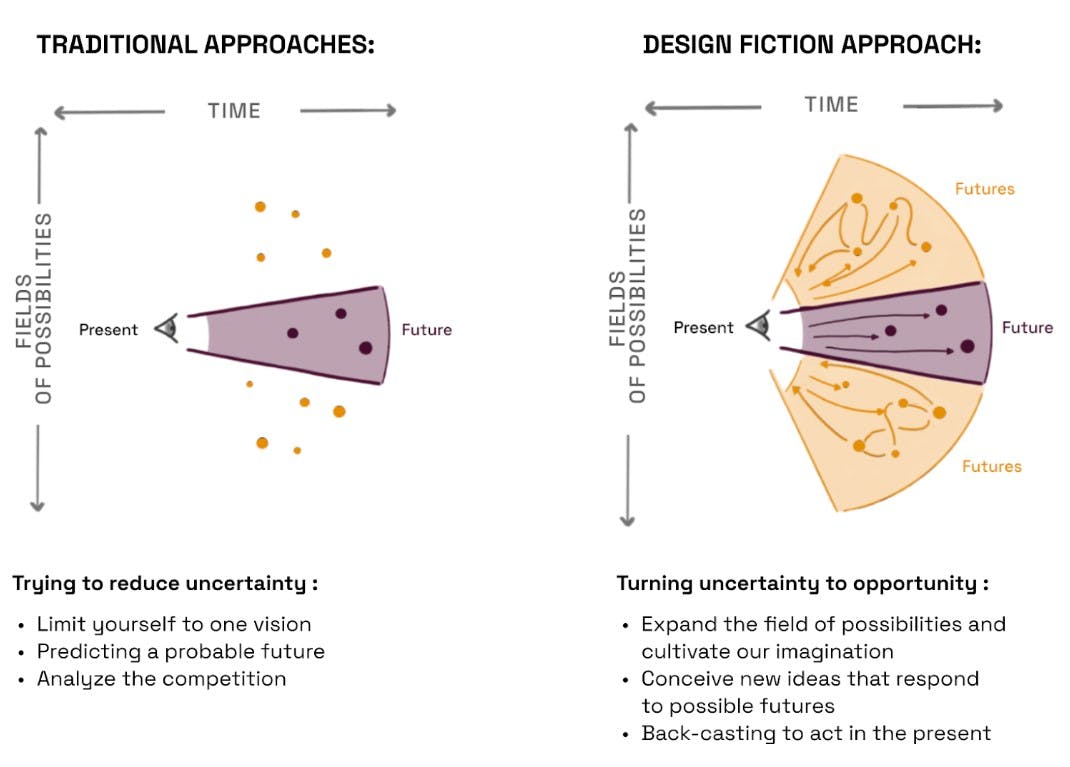
By exploring these potential futures (many of which shed light on blind spots, risks or unforeseen opportunities), our partners have the opportunity to take a step back, see the system in its complexity, and decide where they want to go. Rather than provide answers of what will happen or where the organisation should go, the method allows us to raise the right questions, transform risks into opportunities and set a new vision. From that, we work together to develop new services, products, business models … and a concrete action plan to get there (‘backasting’).
So we still can’t predict the future, but our method allows our partners to be active in defining the future they want, rather than passively reacting to external crises.
If you’re curious, see some examples and our work here, or contact us to find out more about our methodology.
